Are you familiar with ( we have also discussed it previously )
John W. Keely's Forty Laws of Harmony
John Ernst Worrell Keely's
Forty Laws of
Sympathetic Vibratory Physics
we experimented with sacred books ..... Let's try a different type of " sacred book" .... just out of curiosity

The following forty laws governing natural harmony, sound and vibration are explored by Dale Pond in detail in his book: Universal Laws Never Before Revealed: Keelys Secrets. Some of these laws are again explored in Its a Musical Universe! 369
369
(3) Law of Corporeal Oscillations
"All coherent aggregates not isolated from like bodies, oscillate at a period-frequency varying with the tensions that augment and diminish the state of equilibrium."
(6) Law of Sympathetic Oscillation
"Coherent aggregates immersed in a medium pulsating at their natural pitch simultaneously oscillate with the same frequency, whether the pitch of the medium be a unison, or any harmonic of the fundamental pitch of the creative aggregate."
(9) Law of Cycles
"Coherent aggregates harmonically united constitute centers of vibration bearing relation to the fundamental pitch not multiples of the harmonic pitch, and the production of secondary unions between themselves generate pitches that are discords, either in their unisons, or overtones with the original pitch; from harmony is generated discord, the inevitable cause of perpetual transformation."
(12) Law of Oscillating Atomic Substances
"Coherent atomic substances are capable of oscillating at a pitch varying directly as the density, and inversely as the linear dimensions from one period of frequency per unit of time to the 21st octave above, producing the creative force of Sonity, whose transmissive force (Sound) is propagated through the media of solids, liquids, and gases, and whose static effect (Sonism) produces attractions and repulsions between sympathetically vibrating bodies according to the Law of Harmonic Attraction and Repulsion."
(15) Law of Vibrating Atomolic Substances
"Atoms are capable of vibrating within themselves at a pitch inversely as the Dyne (the local coefficient of Gravity), and as the atomic volume, directly as the atomic weight, producing the creative force (Electricity), whose transmissive force is propagated through atomolic solids, liquids, and gases, producing induction and the static effect of magnetism upon other atoms of attraction or repulsion, according to the Law of Harmonic Attraction and Repulsion.
Scholium: The phenomenon of Dynamic Electricity through a metallic conductor and of induction are identical. In a metallic conductor, the transmission is from atom to atom, through homologous interstices, filled with ether, presenting small areas in close proximity. In crystalline structures, heat, which expands the atoms, by twisting them produces striae, increases the resistance, etc. Between parallel wires and through air the induction takes place from large areas through a rarefied medium composed of a mixture of substances, whose atoms are separated by waves of repulsion of various pitches, discordant to electric vibrations; the said atoms sympathetically absorb the vibrations and dissipate from themselves, as centers, concentric waves of electric energy which produces heat and gravism."
(18) Law of Atomic Pitch
"Atoms have each a different and definite pitch, at which they naturally vibrate.
Scholium: Atomic pitch is determined directly
from its simple spectrum.
Scholium: Atomic pitch is determined by computations from its associate spectrum with all other atoms, as in known spectra.
Scholium: Atomic pitches are more important working data than atomic weights; tables of atomic pitches must be precise."
(21) Law of Variation of Atomic Pitch by Temperature
"Atoms in chemical combination oscillate with increasing amplitude directly as the temperature, and simultaneously absorb overtones of higher harmonics, producing expansion of volume and diminution of pitch.
Rule: The gradual approach of the temperature of harmonic combination can be observed by mutually comparing superimposed spectra; chemical combination commences when the fundamental lines of each spectrum bear harmonic ratios by linear measurement."
(24) Law of Variation of Atomic Oscillation by Temperature
"The force of cohesion diminishes inversely as the square of the distance the atoms are apart, and the force of the chemical affinity diminishes in the same ratio. Heat increases the amplitude of the oscillations in a direct ratio to the temperature of the natural scale.
Scholium: New thermometers and accurate thermometric tables, on the natural base, wherein doubling the temperature doubles the pitch of the transmissive energy, are required. Such a table of temperature will bear natural relations to atomic weights, pitches, specific heats, chemical affinities, fusions, solubilities, etc., and will disclose new laws. One table for each must be constructed."
(27) Law of Chemical Affinity
"Atoms whose atomic pitches are in either unison, harmonic or concordant ratios, unite to form molecules.
Corollary: When two atoms are indifferent, they may be made to unite by varying the pitch of either, or both.
Scholium: This necessitates the construction of tables, representing variation of atomic pitches by temperature, pressure, etc.
Scholium: Tables of all harmonics and concords, and harmonics founded upon a normal harmonic scale, are equally essential.
Scholium: Optical instruments may be made to measure pitches of energy."
(30) Law of Chemical Substitution
(33) Law of Chemical Morphology
"The angle of crystallization is determined by the relation between the molecular pitch of the crystallizing substance to the variation- density of the liquid depositing it."
(36) Law of Heat
"Atoms under the tension of chemical combination oscillate with an amplitude directly as the temperature, inversely as the pressure, and as the square of the specific heat. Diminishing the pitch of oscillation inversely as the square of the distance of the atoms apart, and simultaneously increasing the vibrating pitch of the atom by absorption of overtones and higher harmonics."
(39) Law of Refractive Indices
"A table of the refractive indices of substances indicates their molecular pitch; and in connection with crystalline form the phase of molecular oscillation."





(7) Law of Attraction
"Juxtaposed coherent aggregates vibrating in unison, or harmonic ration, are mutually attracted."
(8) Law of Repulsion
"Juxtaposed coherent aggregates vibrating in discord are mutually repelled."
8+7 = 15 = HM 6
John W. Keely's Forty Laws of Harmony
John Ernst Worrell Keely's
Forty Laws of
Sympathetic Vibratory Physics
we experimented with sacred books ..... Let's try a different type of " sacred book" .... just out of curiosity


The following forty laws governing natural harmony, sound and vibration are explored by Dale Pond in detail in his book: Universal Laws Never Before Revealed: Keelys Secrets. Some of these laws are again explored in Its a Musical Universe!
 369
369 (3) Law of Corporeal Oscillations
"All coherent aggregates not isolated from like bodies, oscillate at a period-frequency varying with the tensions that augment and diminish the state of equilibrium."
(6) Law of Sympathetic Oscillation
"Coherent aggregates immersed in a medium pulsating at their natural pitch simultaneously oscillate with the same frequency, whether the pitch of the medium be a unison, or any harmonic of the fundamental pitch of the creative aggregate."
(9) Law of Cycles

"Coherent aggregates harmonically united constitute centers of vibration bearing relation to the fundamental pitch not multiples of the harmonic pitch, and the production of secondary unions between themselves generate pitches that are discords, either in their unisons, or overtones with the original pitch; from harmony is generated discord, the inevitable cause of perpetual transformation."
(12) Law of Oscillating Atomic Substances
"Coherent atomic substances are capable of oscillating at a pitch varying directly as the density, and inversely as the linear dimensions from one period of frequency per unit of time to the 21st octave above, producing the creative force of Sonity, whose transmissive force (Sound) is propagated through the media of solids, liquids, and gases, and whose static effect (Sonism) produces attractions and repulsions between sympathetically vibrating bodies according to the Law of Harmonic Attraction and Repulsion."
(15) Law of Vibrating Atomolic Substances
"Atoms are capable of vibrating within themselves at a pitch inversely as the Dyne (the local coefficient of Gravity), and as the atomic volume, directly as the atomic weight, producing the creative force (Electricity), whose transmissive force is propagated through atomolic solids, liquids, and gases, producing induction and the static effect of magnetism upon other atoms of attraction or repulsion, according to the Law of Harmonic Attraction and Repulsion.
Scholium: The phenomenon of Dynamic Electricity through a metallic conductor and of induction are identical. In a metallic conductor, the transmission is from atom to atom, through homologous interstices, filled with ether, presenting small areas in close proximity. In crystalline structures, heat, which expands the atoms, by twisting them produces striae, increases the resistance, etc. Between parallel wires and through air the induction takes place from large areas through a rarefied medium composed of a mixture of substances, whose atoms are separated by waves of repulsion of various pitches, discordant to electric vibrations; the said atoms sympathetically absorb the vibrations and dissipate from themselves, as centers, concentric waves of electric energy which produces heat and gravism."
(18) Law of Atomic Pitch
"Atoms have each a different and definite pitch, at which they naturally vibrate.
Scholium: Atomic pitch is determined directly
from its simple spectrum.
Scholium: Atomic pitch is determined by computations from its associate spectrum with all other atoms, as in known spectra.
Scholium: Atomic pitches are more important working data than atomic weights; tables of atomic pitches must be precise."
(21) Law of Variation of Atomic Pitch by Temperature
"Atoms in chemical combination oscillate with increasing amplitude directly as the temperature, and simultaneously absorb overtones of higher harmonics, producing expansion of volume and diminution of pitch.
Rule: The gradual approach of the temperature of harmonic combination can be observed by mutually comparing superimposed spectra; chemical combination commences when the fundamental lines of each spectrum bear harmonic ratios by linear measurement."
(24) Law of Variation of Atomic Oscillation by Temperature
"The force of cohesion diminishes inversely as the square of the distance the atoms are apart, and the force of the chemical affinity diminishes in the same ratio. Heat increases the amplitude of the oscillations in a direct ratio to the temperature of the natural scale.
Scholium: New thermometers and accurate thermometric tables, on the natural base, wherein doubling the temperature doubles the pitch of the transmissive energy, are required. Such a table of temperature will bear natural relations to atomic weights, pitches, specific heats, chemical affinities, fusions, solubilities, etc., and will disclose new laws. One table for each must be constructed."
(27) Law of Chemical Affinity
"Atoms whose atomic pitches are in either unison, harmonic or concordant ratios, unite to form molecules.
Corollary: When two atoms are indifferent, they may be made to unite by varying the pitch of either, or both.
Scholium: This necessitates the construction of tables, representing variation of atomic pitches by temperature, pressure, etc.
Scholium: Tables of all harmonics and concords, and harmonics founded upon a normal harmonic scale, are equally essential.
Scholium: Optical instruments may be made to measure pitches of energy."
(30) Law of Chemical Substitution
(33) Law of Chemical Morphology
"The angle of crystallization is determined by the relation between the molecular pitch of the crystallizing substance to the variation- density of the liquid depositing it."
(36) Law of Heat
"Atoms under the tension of chemical combination oscillate with an amplitude directly as the temperature, inversely as the pressure, and as the square of the specific heat. Diminishing the pitch of oscillation inversely as the square of the distance of the atoms apart, and simultaneously increasing the vibrating pitch of the atom by absorption of overtones and higher harmonics."
(39) Law of Refractive Indices
"A table of the refractive indices of substances indicates their molecular pitch; and in connection with crystalline form the phase of molecular oscillation."





(7) Law of Attraction
"Juxtaposed coherent aggregates vibrating in unison, or harmonic ration, are mutually attracted."
(8) Law of Repulsion
"Juxtaposed coherent aggregates vibrating in discord are mutually repelled."
8+7 = 15 = HM 6





 )
)

 shock the Monkey
shock the Monkey
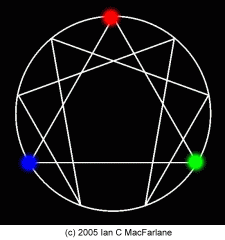













 .... today i did and :
.... today i did and :
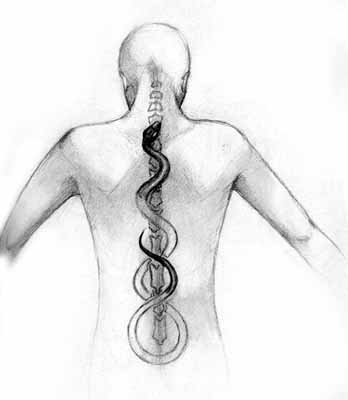


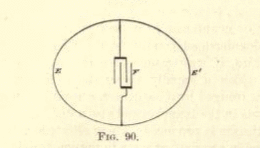

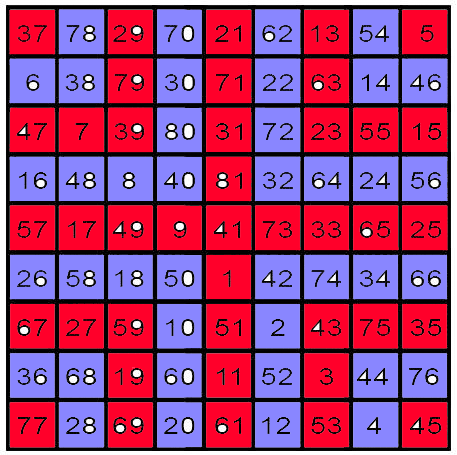



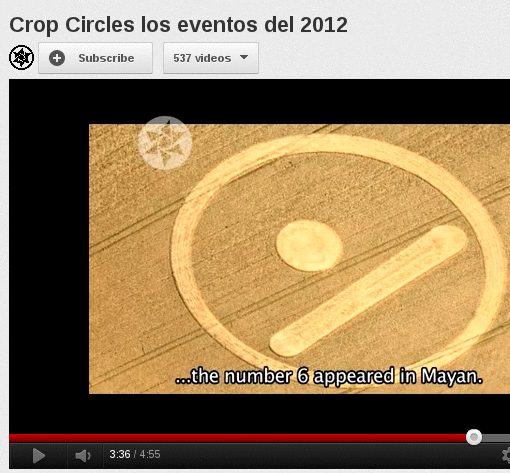
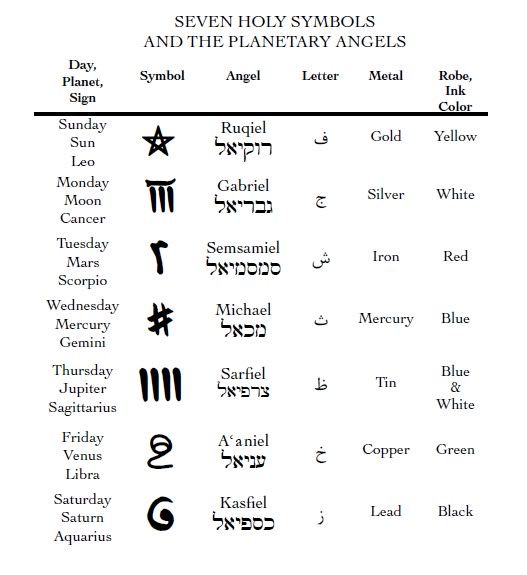



Comment